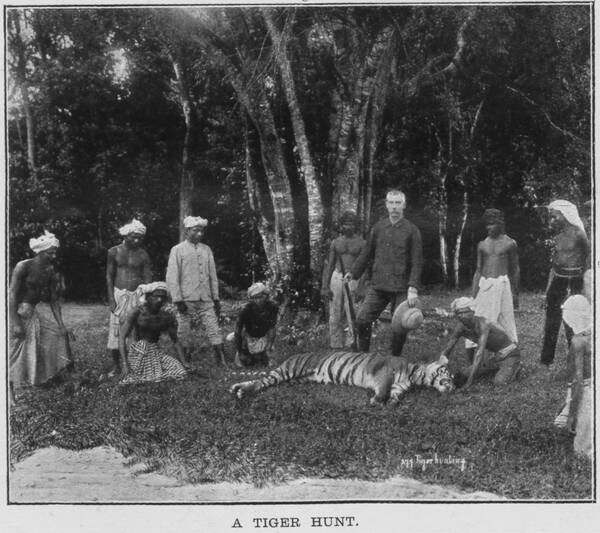Jadual Kandungan
Harimau Malaya
Dirujuk oleh

“Malayan Tiger at National Zoo Malaysia” (HASAN SABRAN, 1 December 2011: Wikimedia).
1800-1900: Konflik Awal
Pada mulanya, seluruh kawasan pedalaman di rantau ini diliputi hutan belantara yang merupakan habitat semulajadi bagi pelbagai spesis haiwan, termasuk harimau. Konflik mula berlaku apabila manusia mula menerokai kawasan-kawasan tersebut, contohnya untuk tujuan perlombongan dan perladangan. Pada zaman kolonial, kegiatan ini dijalankan secara besar-besaran dan sistematik, sehingga banyak kawasan hutan diterangkan untuk tujuan tersebut, lalu memburukkan lagi keadaan.
Di Pulau Jawa dan Sumatera contohnya, pada tahun 1820-an, lebih ramai warga yang dibunuh oleh harimau, berbanding harimau yang dibunuh warga. Namun mulai tahun 1850-an, perkara sebaliknya mula berlaku: “In sum, during the 1820s the number of people killed by tigers in Java was larger than the number of tigers killed, as was probably the case in Sumatra in the same period. In both regions this ratio would be reversed from the 1850s onward. From then on, people were a bigger threat to tigers than the other way around.” (Peter Boomgaard, 2008: "Tigers and People in the Malay World, 1600-1950", m.s.210 - 213, 220).
Di Singapura, peningkatan konflik harimau dan manusia sekitar 1850-an adalah akibat pembukaan ladang gambir dan lada hitam secara besar-besaran: “When the cultivation of gambier and pepper took off in Singapore in the 1840s, plantations extended beyond town and encroached on jungle areas. By the late 1840s, the number of plantations had peaked at 600. Chinese plantation coolies became easy targets for tigers. Reports of encounters with tigers increased in the 1830s and 1840s. Tiger attacks grew so intense that, by the middle of the 19th century, tigers were rumoured to claim one life every day. Governor of the Straits Settlements William Butterworth, upon being questioned in the House of Commons about the tiger problem, stated that the figure was probably 200 deaths a year due to tiger killings – which was nonetheless alarming in a population of 50,000 people. In 1859, one village near Bukit Timah was abandoned due to overwhelming tiger attacks. It was believed that tigers in Singapore killed 300 humans in 1857, but only seven deaths were reported to the police. The actual figure could be higher as many tiger attacks were unreported. Plantation bosses often did not report the deaths as they did not want to scare away potential workers. During the 1860s, more than 350 lives were lost because of tigers.” (Marsita Omar, 2020: |"Tigers in Singapore").
Sementara itu, pihak pentadbiran British di Malaya menawarkan upah bagi setiap ekor harimau yang dibunuh. Kadar upah biasanya $25 seekor, tapi berubah-ubah mengikut tahap ancaman. Ini adalah contoh surat pelekat yang disebarkan kepada warga di kawasan Serendah pada 14 Disember 1894, di mana hadiah tunai sebanyak $25 ditawarkan bagi setiap ekor harimau, dan digandakan kepada $50 seekor di kawasan yang kerap berlaku konflik, ketika itu di antara mukim Batu dan Serendah:-

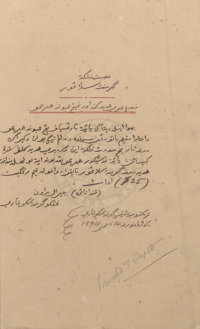
“Surat Pelekat Government Selangor: Fasal Memberi Hadiah Kepada Orang Yang Membunuh Harimau
Bahawa inilah dinyatakan iaitu barangsiapa yang membunuh harimau di antara mukim Batu dengan Serendah di dalam tiga bulan dikirakan daripada tarikh surat pelekat ini maka diberi hadiah kelak seperti kebiasaannya iaitu pada seekor harimau yang dibunuh itu bolehlah mendapat hadiah daripada Government Selangor banyaknya dua puluh lima ringgit ($25) adanya. (Tandatangan) Gerald Brown, Pemangku Government Secretary, Termaktub di Office Government Secretary
Di Kuala Lumpur pada 14 Disember 1894.”
(Sumber: PEJABAT SETIAUSAHA KERAJAAN NEGERI SELANGOR @ Arkib Negara Malaysia, 19/11/1894: |"REWARD FOR DESTRUCTION OF A TIGER. ENQUIRES").
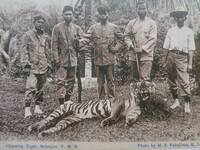

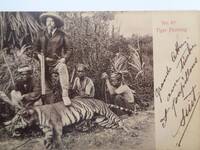
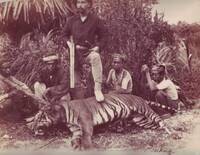
“WILD GAME HUNTING IN MALAYA” (Sustainable Living Institute (SAVE), October 03, 2016: |"WILD GAME HUNTING IN MALAYA").
Harimau Malaya adalah antara spesis yang relatif kecil berbanding spesis harimau India dan Manchuria (purata saiznya 8 kaki 4 inci). Ketika itu, populasinya di Semenanjung Tanah Melayu ialah sekitar 3,000 ekor, dan daerah Ulu Langat adalah antara kawasan habitat utama mereka, selain Perak, sebahagian Pahang, dan Johor. Umumnya, manusia bukanlah makanan utama harimau, melainkan dalam keadaan tertentu, seperti persekitaran atau kecederaan yang dialami. Contohnya, seekor harimau di Ulu Langat dikatakan telah membaham 20 orang warga sebelum berjaya dibunuh pada tahun 1906, kemungkinan kerana kecederaan di kakinya yang memaksanya memburu hidupan yang kurang lincah seperti manusia (mungkin harimau yang dimaksudkan ialah yang ditemui di sekitar Bangi-Kajang pada November-Disember 1905):-
“Chief among the carnivora of the peninsula is, of course, the tiger, which, though it does not attain the size of large Indian specimens, or of the magnificent Manchurian variety, is, nevertheless, a formidable animal. In the Malay Peninsula the average total length of the male is about 8 feet 4 inches, though specimens of 9 feet 6 inches have been obtained, while tigresses are about a foot shorter. The tiger is common throughout the Malay Peninsula, especially in Perak, in the Ulu Langat district of Selangor, in certain portions of Pahang, and in Johore, while stray specimens from the latter State are met with almost annually in Singapore itself. It has been seen near the summit of Batu Puleh, one of the highest mountains in Selangor, but its scarcity or abundance in any given district depends mainly on the presence or absence of deer and pigs, which probably form its principal food, though the stomach of one fine male shot near Kuala Lumpor contained nothing but frogs.
Man-eating tigers are by no means rare, though it would appear that the Malayan tiger does not take to this form of diet so readily as its Indian brother, possibly because the Malay or Chinaman does not form so toothsome a morsel as the Kling or Bengali! One specimen shot in 1906 in Ulu Langat had been responsible for the death of over twenty Chinamen, and, contrary to the usual rule, was by no means decrepit or mangy, though a slight injury to the foot had probably rendered it difficult for the beast to pursue prey more agile and less slow-footed than human beings.
During the year 1906 police rewards were paid for the destruction of seventy tigers, of which half were killed in Pahang, while during the same period seventeen leopards were brought in.”
(Sumber: Arnold Wright, 1908: "Twentieth century impressions of British Malaya: its history, people, commerce, industries, and resources", m.s. 930).
Seorang pengurus ladang di sekitar Ipoh tahun 1910-an, |Mr. J.L. Bathgate, ada menukilkan pengalaman beliau, antaranya termasuk pertembungan dengan seekor harimau di sekitar ladangnya: J.L. Bathgate @ OTAUTAU STANDARD AND WALLACE COUNTY CHRONICLE, VOLUME VIII, ISSUE 415, 29 APRIL 1913, PAGE 2: |"A DAY'S WORK ON A RUBBER ESTATE".
1903-09-24: Harimau di West Country Estate
“On Thursday last one of the West Country Estate coolies was attacked by a tiger in the middle of a clearing, says the Malay Mail. Two other coolies were close by and their yells frightened the tiger, but not before the brute had lacerated the man's chest and back. The man is now in the Kajang hospital.” (Straits Budget, 1 October 1903, Page 9: |"UNITED PLANTERS’ ASSOCIATION").
LATAR PERISTIWA: West Country Estate.
1905-10/11: Harimau di Bangi
Pada Oktober atau November 1905, seorang pemotong kayu telah diserang seekor harimau di sekitar Bangi. Di dalam pergelutan itu, dengan bersenjatakan sebilah kapak, beliau telah menetak salah satu kaki belakang harimau itu sebanyak dua kali, lalu berjaya melepaskan dirinya.
Kira-kira satu atau dua bulan kemudian, pada pagi 7 Disember 1905, telah berlaku satu lagi serangan harimau di suatu lokasi terpencil di pinggir Hutan Ayer Itam.
Kronologi peristiwa:-
- 7/12, 8 pagi: Harimau menyerang 3 orang pemotong kayu yang sedang keluar bekerja, 1.5 batu dari kediaman mereka di Batu 9 Jalan Ayer Hitam (13.5 batu / 21.7 kilometer dari Kajang). Salah seorang daripada mereka menetak kepala harimau tersebut dengan sebilah parang. Harimau tersebut melarikan diri, dan semua terselamat.
- 7/12, 11.30 pagi: Harimau yang sama mengekori salah seorang pemotong kayu sejauh satu batu, sebelum menyerang lalu membunuhnya. Mayatnya dibawa lari.
- 8/12: Pasukan pencari dari Kajang, diketuai oleh individu bernama “Mr. Hay”, berjaya menemui mayat pemotong kayu tersebut. Jerat “spring gun” dipasang di lokasi tersebut. Selepas tengah malam, bunyi das tembakan kedengaran, menandakan jerat telah mengena.
- 9/12 (pagi): Terdapat kesan darah di lokasi, dan bangkai harimau ditemui beberapa ela dari situ.
- 9/12 (malam): Bangkai harimau dibawa ke Kajang untuk dibedah siasat. Ukuran panjang badannya 8 kaki 8 inci (2.6 meter), dan dianggap agak besar. Di kakinya terdapat dua kesan luka tetakan, kemungkinan besar oleh pemotong kayu di Bangi 1-2 bulan sebelumnya.
Kulit harimau ini kemudiannya dibawa ke Muzium Kuala Lumpur, yang baru saja siap dibina. Mr. Hay pula telah dibayar upah sebanyak $50 oleh pihak pentadbiran British, lebih satu kali ganda daripada kadar biasa ketika itu iaitu $25.
Sepanjang tahun 1905 itu, sejumlah 16 orang mangsa korban harimau telah direkodkan di sekitar Jalan Ayer Itam. Setelah terbunuhnya harimau ini, tiada lagi serangan harimau dilaporkan di situ. Berdasarkan pemerhatian ini, kemungkinan juga mangsa-mangsa tersebut adalah korban harimau yang sama.
Ketika peristiwa ini berlaku, pekan Bangi sedang dibangunkan (dibuka tahun 1902), dan bahagian jalan yang menghubungkan Kajang dengan Ayer Itam baru saja dibina (diturap sepenuhnya tahun 1906). Kawasan hutan di sekitar Bangi dan Ayer Itam pula sedang dalam proses pewartaan sebagai hutan simpan (diwartakan tahun 1906).
Sumber:-
| Tarikh | Butiran Keratan | |
|---|---|---|
| | 1905.12.16 | "A Man-eater Killed.". Straits Echo, 16 December 1905, Page 2 |
| | 1905.12.21 | "MAN-EATER KILLED AT ULU LAN GAT". The Singapore Free Press and Mercantile Advertiser (Weekly), 21 December 1905, Page 397 |
Gambaran lokasi secara kasar:-


Anggaran kawasan serangan harimau di pinggir Hutan Ayer Itam pada 7/12/1905.
Kiri: Berdasarkan peta yang hampir dengan tarikh kejadian (PEJABAT SETIAUSAHA KERAJAAN NEGERI SELANGOR, 02/08/1905: |"PORPOSED FOREST RESERVE IN AYER ITAM AND SUNGEI BESI MUKIMS, ULU LANGAT DISTRICT - RE :-").
Kanan: Berdasarkan Mapcarta, kini. Lokasinya di sekitar Kampung Pulau Meranti.
Titik merah: kediaman mangsa di Batu 9, Jalan Ayer Itam.
Bulatan ungu: kemungkinan sekitar kawasan serangan, iaitu sekitar 1.5 batu dari lokasi kediaman.
Bulatan biru: kemungkinan kawasan serangan di Bangi, 1-2 bulan sebelumnya.
Mr. Hay, individu yang berjaya membunuh harimau ini, dianugerahi upah sebanyak $50 (kadar biasa: $25) oleh pihak pentadbiran British, sebagaimana budaya lazimnya ketika itu: “There appears to be no doubt that this was a man-eater, judging by the account published in The Malay Mail. … The D.O. may pay the double reward. $50.” (PEJABAT SETIAUSAHA KERAJAAN NEGERI SELANGOR @ Arkib Negara Malaysia, 11/12/1905: |"REWARD TO MR. HAY FOR KILLING A TIGER - RE :-").
MAKLUMAT LANJUT: William Hay.
Ketika pendudukan Jepun, pada 10 Mac 1945, Muzium Kuala Lumpur telah terkena bom tentera udara Amerika Syarikat, menyebabkan kesemua koleksi bahan pameran yang terletak di bahagian kanan bangunan muzium mengalami kemusnahan. Koleksi muzium yang terselamat ditempatkan sementara di bilik darjah di Sekolah Convent Bukit Nenas, Kuala Lumpur sehingga akhir tahun 1945. Setelah British kembali memerintah, muzium sementara dibina pada 11 Februari 1953, sebelum dirobohkan pada tahun 1958, digantikan dengan Muzium Negara kini, yang siap sekitar tahun 1963. Tidak dapat dipastikan sama ada kulit harimau tersebut telah musnah atau hilang di sepanjang peristiwa ini. (Sumber: Jabatan Muzium Malaysia, 2016: |"Laporan Tahunan 2016", m.s.27-28).
LATAR PERISTIWA: Jalan Ayer Itam
LATAR PERISTIWA: Hutan Simpan Ayer Itam
LATAR PERISTIWA: Muzium Kuala Lumpur / Muzium Negara
Liputan peristiwa serangan harimau yang mungkin ada kaitan:-
- “A Chinese wood-cutter has fallen a victim to a tiger four miles from Sungei Besi in Selangor. The poor fellow's coat was found in the afternoon on the 14th June, and the searchers came across great quantities of blood but no remains have been discovered. This, according to the Malay Mail, is the fourth victim recently in that neighborhood, and presumably the same tiger, which, judging by the footprints, is a huge beast.” (The Straits Times, 20 June 1905, Page 5: |"Untitled").
- Harimau hanya memakan manusia bila terdesak atau mengalami kecederaan atau kecacatan. Ia juga boleh merayau hingga sejauh 35 batu (Straits Echo, 2 August 1905, Page 4: |"Man-eaters").
- “Mr. O.F.Stonor, of Kuala Kubu, writes… All the recent cases in Ulu Langat have occured, again roughly speaking, within a radius of about five miles from Kajang. This can scarcely be considered an extraordinarily wide beat for a tiger; and I am prepared to lay a modest wager that the destruction of a single authenticated man-eater will put an effectual stop to the whole business.” (Straits Echo, 2 August 1905, Page 5: |"Man-Eating Extraordinary").
- “A tiger carried off a Chinese wood-cutter within a mile of Sungei Besi on Saturday last, while the man was at work with a companion.” (Eastern Daily Mail and Straits Morning Advertiser, 24 November 1905, Page 1: |"STATES DAY BY DAY").
1900-1950: Populasi Masih Stabil
“Figure of tigers killed for bounties were no longer published after 1904 and were no longer collected after 1922. Nor were bounties automatically paid out, but it was left to local functionaries to decide on these matters. In various areas the payment of bounties continued, and private enterprises (such as plantations) often chipped in when the state was reluctant to do so. Nevertheless, the number of tigers captured or killed for a bounty probably decreased. It is also likely that an increase in professional European hunting compensated for this loss. Therefore, the number of tigers killed annually around 1930 probably was not much different from that of 1900, namely c. 500. Owing to the Great Depression of the 1930s tiger hunting may have slumped somewhat.
Fewer tigers were caught in the Siak area, because the market in Singapore had more or less disappeared. In Rokan, bounties were no longer paid out after 1932, whereafter the number of tigers increased. Others apparently continued their crusade, and it is therefore not clear whether the Depression made more than a dent in the figures.
….
In sum, during the 1820s the number of people killed by tigers in Java was larger than the number of tigers killed, as was probably the case in Sumatra in the same period. In both regions this ratio would be reversed from the 1850s onward. From then on, people were a bigger threat to tigers than the other way around.
….
Table 10.2. Estimated number of tigers in the four “Malay” regions, 1820-1950:-”
| 1820 | 1900 | 1950 | |
|---|---|---|---|
| Malaya | 2,000 | 3,000 | 3,000 |
| Sumatra | 7,000 | 6,500 | 6,500 |
| Java | 2,500 | 500 | 25 |
| Bali | 150 | 125 | 0 |
“The 1950 figure for Malaya is given in the literature. The other two figures are based on the following assumptions. Environmental change between 1900 and 1950 was partly negative for tigers (more wet rice lands and urban areas), and partly positive (more secondary forest taking the place of primary forest). This implies that, on balance, tiger densities may not have changed much, the more so as hunting pressure was fairly low. Between 1820 and 1900 densities may have increased, as there was a growth of typical tiger habitats (secondary forest, etc). The estimated increase as given in Table 10.2 (1,000) is really pure guesswork and might err on the high side, so that a number of 2,500 tigers in Malaya in 1820 is perhaps equally likely.
….
Tigers disappeared first in densely populated Residencies, where large, often unbroken tracts of permanently cultivated agricultural land had rendered the area unattractive to tigers and other game owing to a lack of cover.”
(Sumber: Peter Boomgaard, 2008: "Tigers and People in the Malay World, 1600-1950", m.s.210 - 213, 220).
1950-Kini: Spesis Terancam
“Since independence in 1957, large areas of productive lowland forests have been converted to oil palm and rubber plantations through government agricultural development schemes. In addition to habitat loss and fragmentation, increased demands for wild meat and high-priced body parts of some wild animals have reduced populations of many large mammals.” (Kae Kawanishi, Melvin E. Sunquist, 2004: |"Conservation status of tigers in a primary rainforest of Peninsular Malaysia", m.s.1).
“The endangered status of the tiger in the larger part of the last century is a direct consequence of habitat loss and active persecution of tigers. The frequently quoted estimate of a reduction in tiger numbers from 100,000 to 5,000 during the 1900s directly reflects the severity of the habitat loss (Sec 1.3). Today, tigers number less than 3,000 as the cumulative impacts of all threats mentioned above in the recent past have taken a devastating toll, especially on India’s populations that used to constitute more than half of the total number of wild tigers.
Although Malaysia still retains 45% of the land area as forest cover (FDPM, 2006) and there are other habitat types that support tigers (Kawanishi et al., 2003), the loss of majority of lowland forests in the last century certainly caused a great decline in the numbers of many large mammals, including tigers. Displaced animals have a higher tendency to be involved in conflict situations with humans, and are either physically removed by the authorities or killed by locals (Zainal Zahari et al., 2001).”
(Sumber: Department of Wildlife and National Parks Peninsular Malaysia / Jabatan Perlindungan Hidupan Liar dan Taman Negara (PERHILITAN) Semenanjung Malaysia, 2008: |"National Tiger Action Plan for Malaysia, 2008-2020", m.s.20).
Populasi harimau Malaya di seluruh Semenanjung Malaysia kini kurang daripada 200 ekor sahaja. Antara faktor utama penurunan drastik ini yang telah dikenalpasti ialah konflik dengan manusia (contoh: pemburuan haram), kemerosotan alam sekitar dan kualiti habitatnya, serta jangkitan penyakit (Dennis Choon Yung Ten, Rohana Jani, Noor Hashida Hashim, Salman Saaban, Abdul Kadir Abu Hashim, Mohd Tajuddin Abdullah, 2021: |"Panthera tigris jacksoni Population Crash and Impending Extinction due to Environmental Perturbation and Human-Wildlife Conflict", m.s.1).
